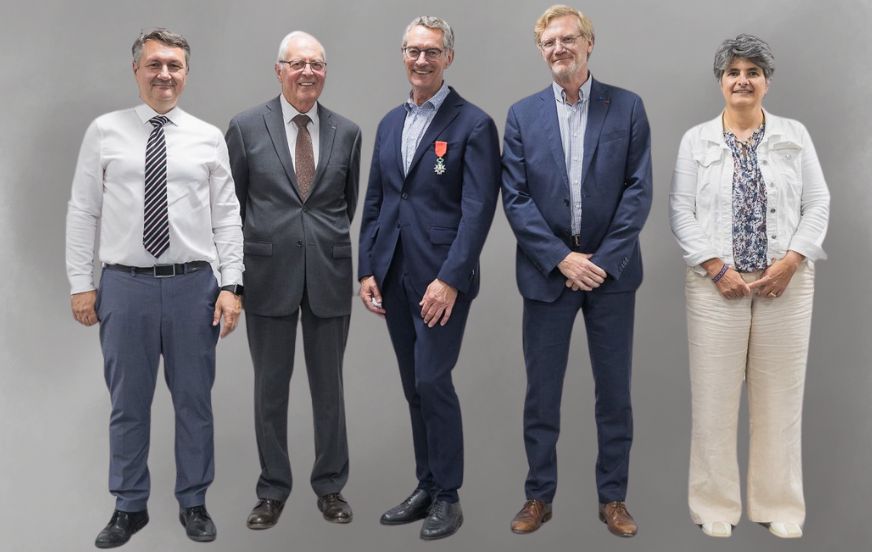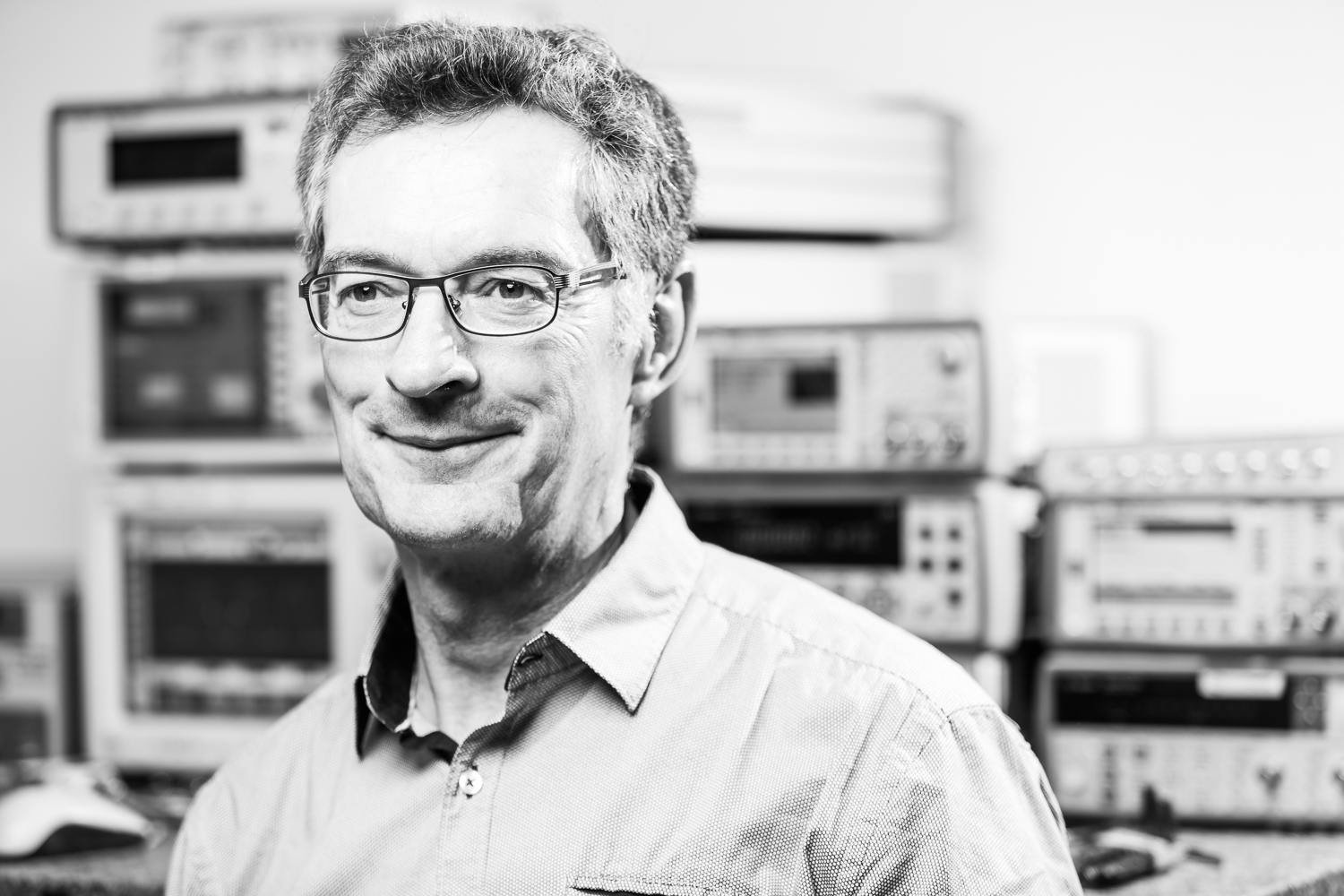
Photo: the ceremony awards at Grenoble on 5 June 2025. From left to right: Lucian PREJBEANU (Head of SPINTEC laboratory), Jean-Paul DURAUD (bureau national de la Société Française de Physique), Bernard Diény, Bruno FEIGNER (Head of CEA-Grenoble), Pascale BAYLE-GUILLEMAUD (Head of IRIG). © CEA
History
Bernard Diény is a physicist whose research has focused on nanomagnetism and spin electronics throughout his career. In the early 90s, Bernard Diény made a major contribution to IBM's introduction of spin valve technology based on giant magnetoresistance (GMR) effects. This revolutionized read head elements in hard disks for magnetic recording. His subsequent contributions are pioneering in many areas of spintronics. One example is his work on magnetic recording memories (MRAM). With his team, he discovered the phenomenon of perpendicular magnetic anisotropy at the metal/oxide interface. His research on MRAM devices has produced more than 60 patents, many of them dedicated to key technologies for today's microelectronics industrial players producing MRAM. Throughout his career, Bernard Diény has made outstanding scientific contributions to the discovery of new spintronic phenomena, combining his extensive knowledge of materials and devices (over 440 papers). He has worked to ensure that these new physical phenomena can be exploited for applications, and in particular introduced into the world of microelectronics via hybrid CMOS/magnetic technologies. In 2002, to facilitate the link between fundamental research in spintronics and nanomagnetism and more downstream research, he and Jean Pierre Nozières set up the Spintronics and Component Technology Laboratory (SPINTEC), a UGA, CNRS and CEA research unit. Over the years, SPINTEC has become an international reference laboratory for research into spintronics, the cornerstone of major technological transformations and, in particular, frugal microelectronics. SPINTEC has enabled the creation of six start-ups, including Crocus, which specializes in the manufacture of magnetic field sensors, and in 2017, Hprobe, which markets testers for spintronic devices. For his many contributions to the field of magnetism and spin electronics, Bernard Diény was awarded the Prix De Magny by the French Academy of Sciences in 2015. In 2010, he was made a Fellow of the IEEE Magnetics Society, and in 2019 received the IEEE Magnetics Society's Award of Excellence. He has received two fellowships from the European Research Council (ERC) focusing on the design, fabrication and evaluation of ultra-low-power, multifunctional spintronic circuits.
 Photo: Bernard Dieny at Spintec Laboratory © CEA / Christophe Levet
Photo: Bernard Dieny at Spintec Laboratory © CEA / Christophe Levet
Bernard Dieny a remarkable scientific pioneer
Since 2012, Bernard Diény has been working with several PhD and post-doctoral students at SPINTEC, initiating a new and original research theme based on the use of magnetism in biology. In collaboration with Inserm researchers, the laboratory has demonstrated the possibility of triggering the spontaneous in vitro death of mechanically stimulated cancer cells by low-frequency vibration of magnetic nanoparticles. The same strategy proved capable of stimulating insulin production in pancreatic cells.

Figure: Electron microscope image of magnetic nanoparticles used for magneto-mechanical stimulation © CEA.
Magnetism enables the local application of controlled mechanical forces on cells with remote control, thereby generating physiological reactions such as the death of cancer cells.
Find out more about Bernard Dieny's career in his autobiographical account.